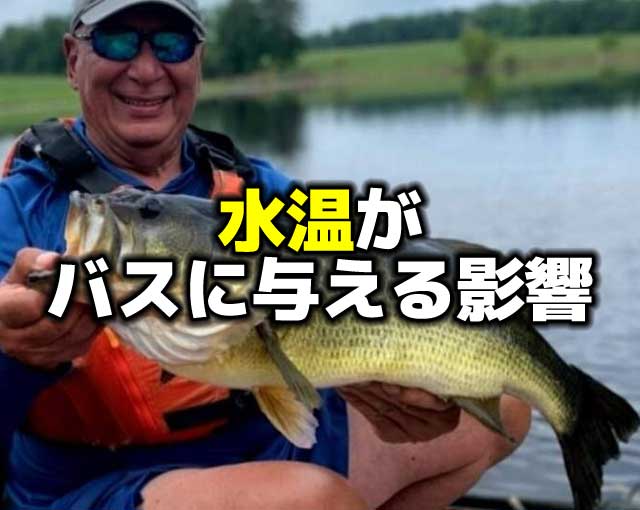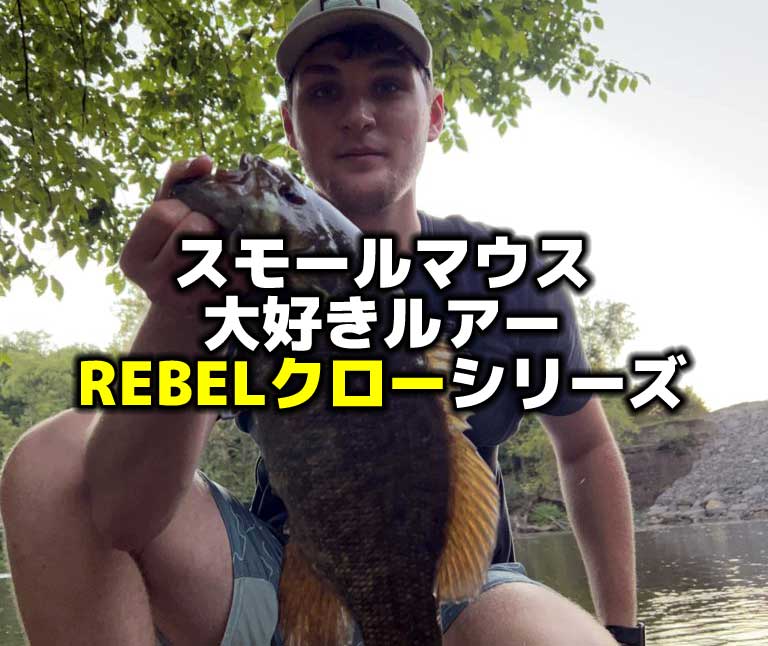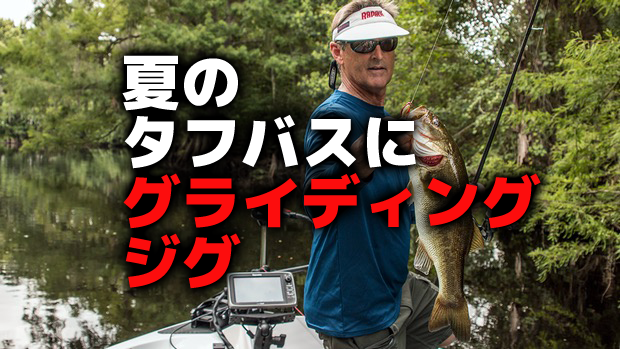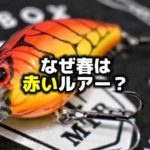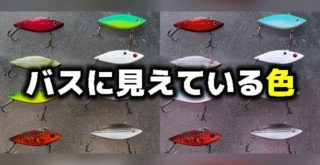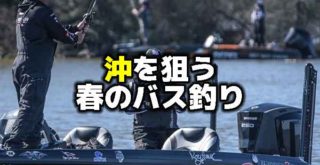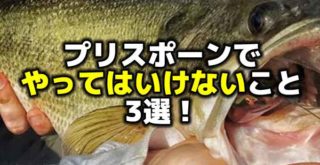反応のないスモールマウスバスに効く! 春のバス釣り定番『ジャークベイト』の使い方
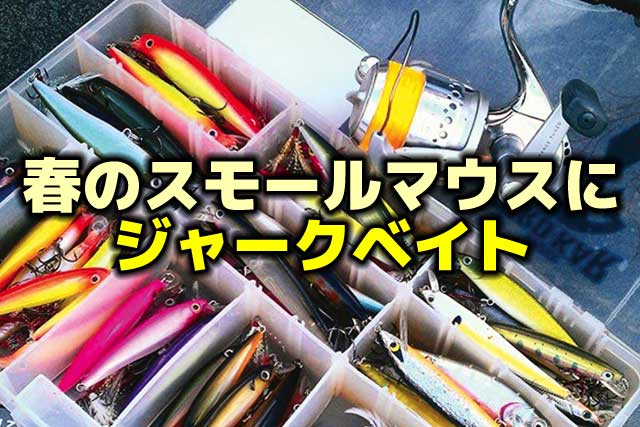
スモールマウスバス釣りの定番「ジャークベイト」。ハードジャークベイトとソフトジャークベイトを状況に応じて使い分ける「タッグ戦」で、反応のないバスも好反応!実戦的なアドバイス満載です!
こんにちは!店長の小山です!
私の住む長野県北部でも春一番が吹きました。いよいよ春ですね。
春といえばスポーニング!ということでスモールマウスバスを愛する皆さんにおかれましては、早く野尻湖解禁しないかなと待ち遠しさがことさらにつのることでしょう。
結局のところ、解禁しないと野尻湖の春スモールを釣ることはできないのですが、解禁した野尻湖のスモールはすでにシャローへ移動しており、ある意味では釣りやすい状態になっています。
ある意味ではというのは、単純にディープに比べて釣りやすいということでして、シャローにいるスモールが全部釣りやすいという意味ではありません。
春のスモールマウスバスを釣るには、それなりの法則といいますか、定番というものがあります。
そのひとつが「ジャークベイト」です。
ジャークベイトにはハードジャークベイトとソフトジャークベイトがありますが、この時期はどちらも必要で、それぞれの使い方をよく知っている方は、よく釣っていると思います。
ジャークベイトといいますと、ジャークとポーズを織り交ぜるといったテクニックが必要なんじゃないの?そうじゃないと釣れないんでしょ?というルアーのように感じるため、初心者さんには「難しいルアー」と思われるかもしれません。実際、私もそう思っていました。
しかし、それは違います。
ジャークベイトの最も重要なところは、春の重要なレンジにルアーがサスペンドしてくれて、バスのストライクゾーンにルアーがずっととどまっていることなんですよね。
ですので、初心者の方でも難しく考えず、ガンガン使っていけばいいと思います。
この記事は、アメリカ中西部のバス釣り専門メディア「midwest outdoors.com」のコラム記事で、ウィスコンシン州のバス釣りガイドであるアンドリュー・レガース氏が、春のスモールマウスバスへのジャークベイト対策を解説してくれています。
春のハードジャークベイト・ソフトジャークベイトそれぞれのジャークベイト戦術を覚えて、春のスモールマウスバスを釣る準備をしましょう。
いつ、どこでジャークベイトを使うか
When and where to reciprocate
The waters of northern Wisconsin contain some of the best inland smallmouth bass fisheries in the Upper Midwest. What sets our fisheries apart from other inland waters and northern states are the diversity of lake types, fish population densities that vary lake by lake and the availability of trophy bass accessible and protected by catch-and-release regulations during this time of year. Three- and 4-pounders are so common that they rarely come up in discussion unless it’s a day of unbelievable numbers. Meanwhile, 5- and 6-pounders are the ones we target most, and catching a few of these is possible on any given day.
Beginning shortly after ice-out, and once water temperatures reach 45 degrees, smallmouths undertake their structural migrations from deep overwintering habitats to shallower staging locations. These areas will be associated with and in close proximity to spawning grounds with heavy concentrations of fish usually schooled and stacked in large groups along the edges of structural elements. This spring movement will last until water temperatures reach 55 to 58 degrees, so this window of opportunity can be for up to four weeks depending upon weather and the fish’s biological clock. These locations may range from rock shoals to large main-lake flats used for a combination of both feeding and spawning. However, spots that are more unique for their physical features, accompanying a mixture of rock and wood habitats, and larger size of the flat, are often the best. Mix these areas along with main-lake areas with avenues to deep open water.
Herky, quirky, and kind of jerky
The use of suspending jerkbaits largely rose to prominence through tournament fishing and the modifications that ensued. During the infancy of suspending jerkbaits, anglers often customized floating minnow baits and soft fluke-styled plastics to slowly sink and run deeper, and to hang motionless to draw strikes from curious smallmouths. Since then, we now have more options and opportunities before us thanks to the soft-plastic and hard-bait manufacturers specializing in the production of suspending minnows.
Selecting between a hard jerkbait and a soft jerkbait, realize first that you will need both lure types followed by patience when prospecting for spring smallmouths.
Hard jerkbaits
For me, finding smallmouths with these techniques often means speed in presentation, following through with my milk run of spots and efficiency in locating concentrations of fish and camping on them. As I typically dissect multiple lakes per day, a quickly presented hard jerkbait, such as the Rapala X-Rap 08 on spinning gear and size 10 with baitcasting gear, allows me to move quickly and eliminate water while remaining efficient to locate smallmouths. By combating smallmouths with a power-fishing approach like this, I’m able to target the most aggressive fish within the concentrated group first.
After showcasing these quick presentations with X-Raps, I then turn to more subtle and slower jerkbaits when I know I will be camping out at the spot and a nice concentration of smallmouths has been located. Enter the 4-inch Matzuo Phantom Minnow, Dynamic Lures J-Spec and Travado, and the all-new Rapala Shadow Rap 11. Each of these is fished slower and offers a greater level of noise, suspense and hang time in strike zones.
Soft jerkbaits
Considering how smallmouths at this point haven’t seen a lure for months, nearly all fish initially encountered will be aggressively feeding. However, a handful within the population is stubborn. As these staging spots with concentrations of smallmouths get pounded and fish end up seeing multiple casts thrown their way, a number of fish may refuse to strike or attempt to only push or nudge the bait, avoiding hooks altogether. This is where I follow up with the soft jerkbait to clean house.
Equally effective for smallmouths and sometimes even better depending on fish activity levels, soft jerkbaits in the fluke style like the 4 1/4-inch Jerx by Stankx Bait Company can be fished with the same cadence as a hard jerkbait to draw strikes. It draws strikes from aggressive fish, but also triggers reluctant strikes from wary, conditioned fish. Soft jerkbaits like this will produce when the hard baits won’t. It’s important to work a soft jerkbait just as you would a hard jerkbait. Rigged weightless with a 3/0 Eagle Claw Trokar MagWorm with plastic barb keeper, which keeps it honest and gives it a slow sink, I make sure to pop the bait with a few upward jerks and let it hang and glide slowly down a few feet in the water column. When it’s their time to be used, soft jerkbaits offer a greater hang time in strike zones and will always sink at a slow minimal rate. Additionally, they will offer livelier finesse action, which I believe is what tempts conditioned fish and the big and old, experienced bronzebacks to strike. The soft jerkbait will often catch smallmouths from the same spots where the hard baits blew past them moments earlier.
Tag teaming smallmouths
Finding and catching smallmouths with hard and soft jerkbaits isn’t only a visual presentation for fish, but it’s also a visual experience for anglers. Because the majority of my bites occur on slack line while the a hard bait is suspending or soft bait is on the glide downward, I always keep my eyes fixated on the top 6 inches of my rod throughout the entire retrieve. Regardless of light penetration and weather, it’s important to keep a watch on your line and the rod tip.
For fishing jerkbaits in this reciprocal manner, I always keep multiple rods and reels rigged with an array of hard and soft baits. For instance, one 6-foot 9-inch, medium-heavy, fast-action baitcasting rod with 10-pound-test copolymer line will be rigged with a size 10 Rapala X-Rap or 4-inch Dynamic Lures Travado. Another rod will be a shorter, medium-heavy spinning rod with 8-pound-test copolymer. Then, a third rod, a 7-foot, medium-heavy spinning rod with 8-pound-test copolymer line, will handle a size 08 Rapala X-Rap and a 3 1/2-inch Dynamic Lures J-Spec. Finally, my last spin is a 7-foot, medium-heavy fast-action rod spooled with 8-pound copolymer line to handle the weightless soft jerkbait.
For most jerkbait applications, I strongly recommend a spinning rod and reel over a baitcasting setup. Line is also important, and I fish with a low-stretch copolymer line. Some fishermen will use braided superline with fluorocarbon leader material, but I am vehemently against it. The name of this game is suspending the bait and keeping it within 5 feet below the surface at all times. Braided lines float and fluorocarbon leaders sink, offering zero line control. They also don’t offer any stretch, which is needed for really good hook-sets. I’ve seen anglers lose more fish and miss many more opportunities fishing this way than they would with copolymer lines.
If you’ve noticed by now, this piece has nothing to do with color selection or presence of baitfish. That’s right, because neither variables matter once you locate staging smallmouths. Well-presented baits with perfect execution in the retrieve, and the angler’s feel for strikes and patience, is what matters most.
I’ve caught hundreds of spring smallmouths with this reciprocal technique in warm and calm sunny conditions, and equally in cold, windy, snowy conditions.
The success of reciprocating between hard and soft jerkbaits and interchanging them on smallmouths all has to do with smallmouths staging and being congregated near spawning grounds, their feeding moods, level of conditioning and the angler cleaning up on his missed strikes. Learn to tag team smallmouths with a combination of hard and soft jerkbaits. By doing so, you’re going to have a hard time getting off the water this spring.
ここでは、北ウィスコンシンの内陸にあるスモールマウスバスフィッシングフィールドでの解説をしています。この地域の湖沼は、他の州の内陸にある湖沼と比べて、湖の多様性が高く、湖ごとにバスの密度が異なることが特徴です。また、この時期はビッグなスモールマウスバスを狙う絶好のチャンスです。3~4ポンド(1360g~1800g)のバスを釣るのは普通で、異常なほど沢山釣れた日以外は話題にもなりません。私たちは5~6ポンド(2200g~2700g)のバスをターゲットにしており、ある程度の数を1日で釣ることが可能です。
氷がとけて水温が7℃に達すると、スモールマウスバスは水深のある越冬場所から、より浅い産卵場所付近への移動を開始します。この時期、大規模な群れを形成しながら地形変化のエッジに密集しているのが普通です。この春の移動は、水温が13~14℃に達するまで続きます。したがって、天候次第ですが約4週間ほどのチャンスとなります。
この移動先にはシャローのロックエリアからやメインレイクのフラットなど、産卵とフィーディングの両方に適した場所が選ばれます。そして、地形的な特徴が際立っていたり、岩と木が混在していたり、規模が大きかったりといったスポットは、特に最適です。こうした場所がメインレイクのディープと隣接しているのが理想的です。
特徴的なアクションが魅力のジャークベイト
サスペンドジャークベイトの人気が高まったのは、トーナメントの影響が大きいとされます。初期のサスペンドジャークベイトのころは、フローティングミノーの浮力を抑えてゆっくり沈むように改造したり、フルークのようなソフトジャークベイトにシンカーを付けてディープまで沈ませ、動かさずに釣ることが多かったのです。こうすることで、バスの好奇心を刺激してバイトさせることができました。それ以来、サスペンドジャークベイトの開発で多くの進歩がありました。
ハードジャークベイトとソフトジャークベイトを使い分ける上で大事なことは、この2つのタイプを使いこなす忍耐力です。春のスモールマウスバスを狙うには両方が必要となります。
ハードジャークベイト
私にとってこのテクニックでスモールマウスバスを見つけるには、プレゼンテーションの速さと効率性が重要です。私は通常、1日に複数の湖を釣るので、スピニングタックルでラパラのXラップ08を使ったり、ベイトタックルでXラップ10といったハードジャークベイトを使うことで、スピード感を保ちつつ効率的にバスの群れを見つけていきます。このパワーフィッシングのアプローチで、スモールの群れの中でも特に釣りやすいバスをターゲットにします。
Xラップで素早いプレゼンテーションをし、バスの群れを見つけ、ここで粘ろうと決めたら、スローなジャークベイトに切り替えます。Matzuoファントムミノー4インチやDynamic Lures J-Spec や Travado、ラパラ・シャドウラップ11などがそうです。これらはよりゆっくりとした釣りができ、バスを惹きつける音やサスペンドによりストライクゾーンでの停滞時間が長くなります。
ソフトジャークベイト
この時期、スモールマウスバスは何ヶ月もルアーを見ていないので、多くのバスが積極的にアタックしてきます。しかし、バスによっては警戒心が強く、同じ場所を何度も叩かれ続けられると、ルアーを避け、バイトして来なかったりすることがあります。この場合は、ソフトジャークベイトでフォローを入れます。
Stankx Bait CompanyのJerx4.25インチスのようなフルーク系のソフトミノーは、ハードベイトと同じテンポで使え、アグレッシブなバスだけでなく用心深くなったバスからもバイトを引き出します。イーグルクローTrokar MagWorm3/0のウェイトフックに付けてスローシンキングにし、リフト&フォールを繰り返します。私は必ず上向きに数回ジャークしてルアーをポップし、ラインを張ったまま数十センチほどスローカーブフォールさせます。
ソフトジャークベイトは、最小限のフォールスピードでストライクゾーンでの滞留時間が長くなるように使うことでより効果的なフィネスアクションとなり、それがタフったバスや大型で警戒心の強いスモールマウスバスでもバイトしてしまうものだと私は信じています。 ソフトジャークベイトは、ハードベイトでひととおり釣った後でもスモールマウスが釣れることがよくあります。
スモールマウスをこのコンビで攻略
ハードジャークベイトとソフトジャークベイトでスモールマウスを見つけて釣るというのは、バスに対して視覚的なプレゼンテーションをするわけですが、これはアングラーにとっても視覚的な釣りでもあるのです。
バイトの大部分は、ハードベイトがサスペンドしているとき、またはソフトベイトのフォール中のラインがたるんでいる時に発生するため、回収するまではずっとロッドティップのあたりを良く見ています。 天気や明るさに関係なく、ラインとロッドティップに常に注意を払うことが重要です。
このふたつのジャークベイトで釣るために、私は常に数本のタックルにさまざまなハードベイトとソフトベイトを結んでいます。 たとえば、6 フィート 9 インチのミディアムヘビーのファストアクション ベイトロッドに10ポンドフロロのタックルには、ラパラ X-Rap10 またはダイナミックルアー Travado4インチを結びます。 もう1本のタックルは、もう少し短いミディアムヘビーのスピニングロッドに8ポンドのフロロラインです。 3本目のロッドは、7フィートのミディアムヘビーのスピニングロッドに8ポンドフロロで、ラパラ X-Rap08や3.5インチのソフトジャークベイトです。最後はソフトジャークベイトのノーシンカー用に、7フィートのミディアムヘビーのファストアクションに8ポンドフロロのスピニングロッドです。
ジャークベイトを使う場合は、ベイトタックルよりもスピニングタックルをお勧めします。 ラインも重要で、私は伸びの少ないフロロラインで釣りをしています。 アングラーによっては、PEラインにフロロカーボンのリーダーで使う人もいますが、私はそれには反対です。
この釣りは、ルアーをサスペンドさせて、常に水面下1.5メートル以内に保つことです。 PEラインは浮き、フロロカーボンリーダーは沈むことで、ラインコントロールが難しくなってしまいます。 また、フッキング率を上げるためのラインの伸びもありません。
この方法で釣りをするとき、フロロカーボンラインを使わないことでチャンスを逃す多くのアングラーを見てきました。
もうお気づきかと思いますが、この釣りにはカラー選択やベイトフィッシュの存在はあまり関係ありません。 産卵を控えるスモールマウスマウスを見つけてしまえば、どちらの要素もさほど重要ではないからです。 きちんとアクションするルアー、そしてアングラーの反応と忍耐力が最も重要なのです。
私はこのテクニックを使って、暖かく穏やかな晴れた状況でも、寒くて風が強く、雪が降る状況でも、何百もの春のスモールマウスを釣ってきました。
ハードジャークベイトとソフトジャークベイトを交互に使い、スモールマウスの反応を引き出せるかどうかは、すべて産卵を控えたスモールマウスの群れの近くに自分がいること、彼らのルアーの好み、コンディション、そしてアングラーのミスバイトへの適応力に左右されます。
ハードジャークベイトとソフトジャークベイトを使ったタッグマッチで、スモールマウスに挑みましょう。 そうすれば、この春は帰りたくなくなるほど釣れるはずです。
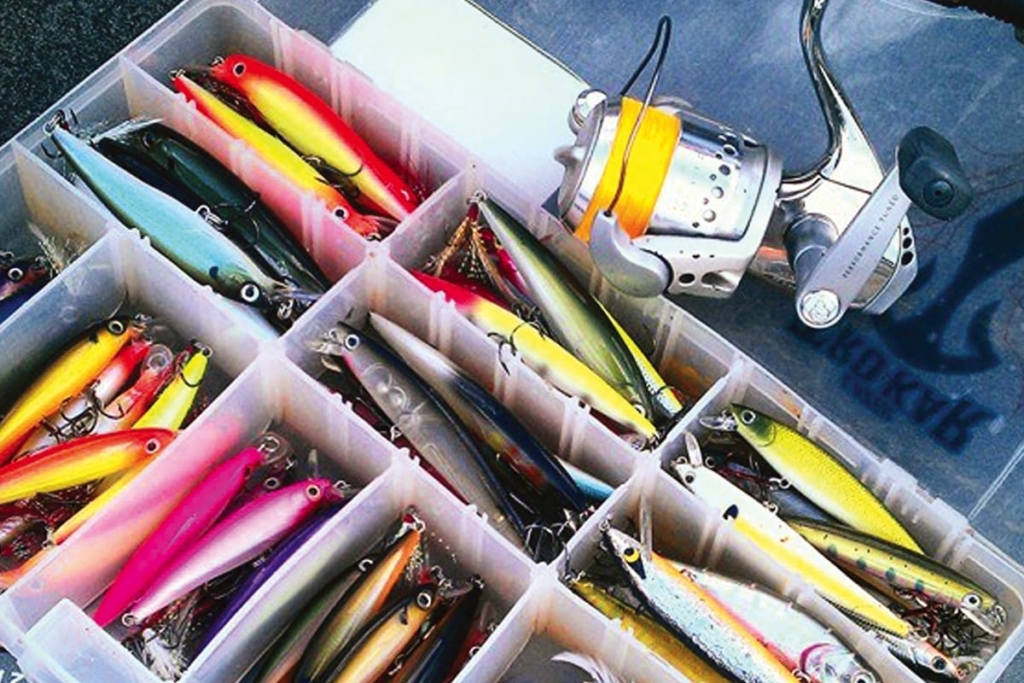
春のスモールマウスバスに対するジャークベイト、めちゃくちゃスリリングですよね。
私がこの記事にあったことで共感するのは、ラインはフロロ通しで使うことだと思います。
この時期はもともとショートバイトが多いので、PEタックルだとバイトが乗らないことがより多くなってしまうんですよね。
それと、ジャークベイトの釣りはバイトが急激で、突然マックスパワーで引っ張られることが多いので、PEラインだと乗ったとたんにフッと軽くなる、身切れバラシが多くなるのではないかと思います。
想像してみてください。2キロクラスのスモールがいきなり全開パワーでルアーをひったくるんです。そりゃタックルセッティングは重要ですよね。
ある程度のラインの伸びがあることが、この釣りには重要ではないかと思います。
ただし、ロングキャストして使うディープのシャッドキャロなんかはPEラインでいいと思います。
あとは、ショートバイトが続いた時にどんな対策をするかも重要ですよね。この記事によると、ソフトベイトにするということでしょうかね。いいですねえ。
また、野尻湖ではボート中心の釣りになると思いますが、多くの方はハードルアーを沖から岸に向かってルアーをキャストされています。
それでもいいのですが、よりストライクゾーンに長くルアーを通すには、岸にボートを寄せて、岸と平行にルアーをキャストしてみてください。ハードルアーの場合ですよ。
そうすることで、いえ、それだけでバイトが増えると思います。
ソフトジャークベイトの場合はバスを水面近くまで浮かせて食わせる感じになると思いますので、岸と平行かどうかはそれほど重要ではないと思います。
(この記事の主旨とはズレますが、ジグヘッドスイミング(ミドストやボトスト)の時も岸と平行の方が圧倒的に良いですよ!)
解禁当初の野尻湖はゴールデンウィークですし、人気がありますから、思った通りのボートポジションを取るのが難しいかもしれませんが、できるようならぜひ試してみてくださいね。
ああ、野尻湖の解禁が待ち遠しいですね。
あの「グーン」と突然に強烈に引っ張られるバイト、はやく味わいたいです!!!
それではまた。
毎度ありがとうございます!





